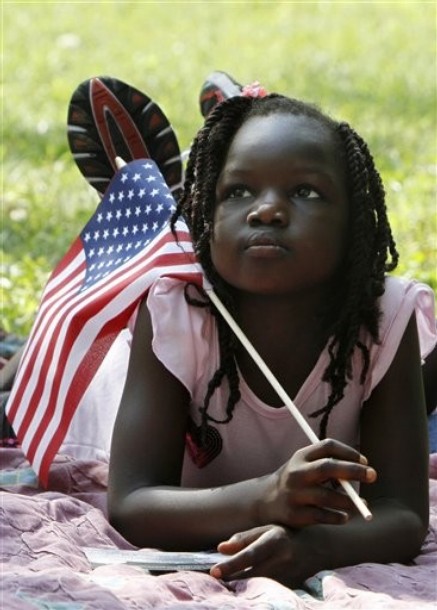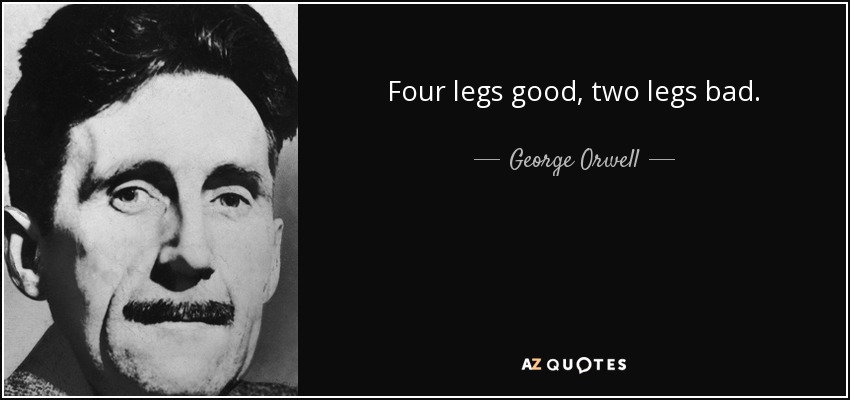
The winner of the Presidential Election this coming November will determine which party holds the Presidency during the 250th Anniversary of America’s independence from Britain. Back in the 1970s was a time of high inflation and when social mores were collapsing with perversity and decay (both real and imagined) with a perceived radicalization of the political parties combined with weakness being felt in international affairs—conditions that many would say America faces now. Yet in 1976, during a contentious Presidential race run in the shadow of malfeasance from the White House and military defeat abroad where crime was skyrocketing and inflation ran rampant, America was able to come together to celebrate the Bicentennial and the “Spirit of ‘76”.
In two years time, when we celebrate another milestone birthday for America, could we ever hope to have such widespread unity and outpouring of patriotism and unity—or are we doomed to an America divided in twain with each side being treated as “the other” by the opposite side, with each side claiming itself to be the real America defending itself from “the other”.
There has long been forces and ideologies, of foreign import, trying to fundamentally transform America. Though they vary, these belief systems are at the very least intellectual “kissin’ cousins”. Those who push to supplant if not outright replace that American essence that has made America so exceptional in world history are indeed a minority, but that does not mean that those who oppose that minority are only targeting that minority.
In many ways, that transformational minority had far less opposition, if any, fifty if not much more than they do today. It may seem that things are worse off only because the ablative armor of our social mores and societal standards hadn’t bee worn away yet. Instead of seeing an establishment of a coherent opposition and the slowing down, if not outright reversal, of the broader strokes of the minority radical Left and the fundamentals of society, they see what that thin remnant of ablative social armor was up against and lash out against what to them is a sudden threat to their sense of superficial normalcy.
Much of American society has changed in the past fifty or even hundred years, just as it has before and will do so in the future. It has changed because of that transformational influence both negatively as well as positively and people responded to this fundamental transformation and fought to conserve those core values of America.
American have always had their differences of opinion and belief, even within a unifying Patriotism and love of America. This day and age is no different. But increasingly on the Right, there is less of a feeling towards emphasizing how the radical Left is wrong and then try to win over many moderate median voters or even those left-of-center who are not radical hard-Left ideologs, and more of an easier and lucrative path of emphasizing a superficial normalcy as the “true” or “real” America by exacerbating sub-cultural differences with other Americans to manichean levels of madness.. The consequence o this is to define the enemy not as the radical Left ideologue minority, but anyone who is outside an increasingly narrower definition of “normal”.
This over-simplified view can often bee result in valid criticisms from anyone considered more of an outsider as an attack from one of them against one an us, with a blind and almost histrionic defense of what is being criticized. The examples for this are manifest.
One of the most notable examples was the criticism by Kevin Williamson on more rural White communities where drug use and associated crime, social decay, and fatherlessness are increasingly rampant. The criticism isn’t that different from many of the similar issues raised when it came to Black ghettos or inner cities which drew ire from the Left who identified with said inner cities over the elitists critical thereof. Nor is it much different from the veritable Ben Shapiro’s 3 rules for not falling into poverty.
Those previous criticisms did not raise much of an issue from the vast majority on the right, or even from many on the Left such as Daniel Patrick Moynihan half-a-century ago. Why? Because those were criticism of the other who were on the opposite side of of the us vs. them divide, and thus culturally antipodal to them.
But Williamson’s did. Again, why? Because those he was criticizing suddenly fell on this side of said us vs. them divide culturally. That is not to say those who took umbridge were supportive of fatherless homes filled with methheads, but because the person they saw doing the criticizing was seen, relatively, as a more distant other (and thus elitist) then the ones who were being criticized, who were seen as being much closer. Not so different than some well-off urbanite or “bleeding heart” moderate in the suburbs. In both cases, those who most strongly defended those being criticized were largely free themselves of the negatives that were being criticized, and, ironically to some, those who most strongly took umbrage tended to embody the other sides proffered solutions on how to improve the conditions and communities of those who were criticized.
Indeed, such criticism and pointing out of problems and what needed to be addressed was seen not only as a vicious attack by some lofty uncaring elite, but an attack by an oppressor looking for a reason to sweep undesirables aside—a criticism by many on the Left towards Republicans during the Reagan era of the 1980s. The flip side is also true: Many people who would feel sympathy for people living in such predominantly White rural areas are offput by the knee-jerk defense thereof, just as many who criticized Black inner city ghettos were offput by the knee-jerk defense of those places and people.
There are more recent examples of this us vs. them outlook taken so gently and casually towards a manichean stance than many people who take sides don’t even realize that rather than attacking a few elite, they are othering great swaths of America (even if for political or social reasons they won’t contemplate that). Two recent songs from last year serve to highlight this.
The first example is “Rich Men North of Richmond”. That song attacks elites (real of perceived) in the Northern Virginia suburbs and in urban (and perhaps even suburban) elitist areas to the north of the the singers community, which stands in contrast to the others he sings about. Again, there is a divide drawn, with the emphasis of who aren’t the “rich men north of Richmond” being poverty stricken people who come home to drink alcohol and blame their situation on said “rich men north of Richmond”. If that is the us in the us vs. them divide that the song established, then those who are sufficiently different from the song’s POV character are implicitly lumped in with the others being attacked in the song. This is an example where the other is at least in part defined as being outside the sub-cultural community norms if the “real” or “true” American folk.
Another examples, this time intentionally obnoxious, was the “Try That In A Small Town” song which squarely put the dividing line as the “them” of anyone not from a small town, and thus lumped in with with the rioters and looters of Leftist “protests” or at least tolerant of said rioters/looters, while anyone from a “small town” is declared a beleaguered “us” that the others dare to criticize as anything but pure and wonderful! The enemy, then, is everyone who isn’t from a “small town” or culturally connects therewith; those who are, thus, become sacrosanct no matter how horrible they are or what damage to society they do.
This demonization of Americans, who are more different than similar, as the root of all evil that threatens the deionizers is something that both Left and Right are not only capable of, but increasingly eager to engage in. This gets to the point where their fellow Americans are considered the only threat to America, and that hostile foreign powers must be victims of the machinations of other Americans since no foreign power sits so squarely on America’s purported political or cultural antipode! Fifty years ago, the hard Left blamed America first, and now we are seeing the post-conservative “New” Right plagiarizing the old Left by blaming America First™!
This manichean divide is also seen as a knee-jerk anti-“elitism”, where many on the Right feel like the popular high school jocks hating the high school nerds that now rule over them. Of course, many of the people most heavily pushing are social media trolls looking for attention. But this is an example of a parochial provincialism that separates out their more familiar, and thus “normal”, communities from those Americans who are different and thus “the other” in a readily dividable and understandable way. This anti-elitism becomes an attack on all institutions and sources of authority that they do not themselves find familiar and thus “normal”.
Rather than oppose the cooption of colleges or professional associations, and fight to reclaim those sources of learning and authority, there is an increasing sentiment that those things are irredeemable and those associated with them being irrevocably tainted as “the other”, and thusly can and ought to be outright dissolved since they don’t directly affect “us”.
Ironically, many of the anti-elitist leaders are themselves rich and educated people with extensive experience with professional associations and “swampy” organizations. But these people get a pass because they have the cultural signifiers and virtues signaled, with all the attendant shibboleths passed; this allows them to be considered part of the “us” rather than the “them” who don’t share said indicators of shared superficial normalcy even if they don’t have an education, are poor, or otherwise have little to no say in things.
In effect, this is just “four legs good two legs bad” logic from Orwell’s “Animal Farm”, with all the attendant excuses for why some “two legs” actually have four, and vice versa.

Such oversimplification can reach ludicrous levels of stereotyping. Your humble author recalls an exchange on Twitter (or “X” if you prefer) where someone posting a picture of some piping with valves, and declared that people who were college educated could not fathom to to put together or even understand this set-up. The person who posted this tweet angrily called your humble author a liar when it was pointed out that your humble author not only had to lay out and put together piping like that as part of graduate studies, but had to design such set-ups and others as well to the point of approving of the choice of valves.
As much as there are those overly-educated and pampered elite who are shocked to know that skilled blue collar workers who can do the things that they do, there is also those who are shocked to learn that there are white collar workers who also know skilled labor including how to build and repair machinery or even their own homes!
There are plenty of people who defy such simple stereotypes of a college-educated bourgeoisie elite vs. a put-upon proletariat of laborers. Those who claim that any modern-day civil war would be easily winnable ignore that there are plenty of left-of-center voters in rural areas and red states while there are plenty of people able to perform skilled physical labor in urban areas and blue states. Oversimplified stereotypes are a bad assumption and can lead to poor decisions if an actual crises were to occur.
Oh, that feeling of community normalcy is still there, and a rural gay couple with masters degrees could very well put that community connecting as a priority over political differences, but then non-White laborers and even White conservatives in urban or even suburban areas might side with their communities over political differences as well. But then there’d probably be enough people who wouldn’t to make a right mess of things, with all the unintentional foreign invitation that that might result in.
Yes, many on both sides who have such a manichean view of America have fallen into a false dilemma fallacy. Political parties used to be more regional cultural in many ways, with much broader ideological diversity in each, than they do now. And while the political parties have sorted, and will continuously sort and re-sort, into more ideological lines, the idea that this indicates an us vs. them divide is belied by the fact that this ideological sorting of the parties has resulted in a large chunk of the electorate siding with neither political party an remaining resolutely non-partisan, even if they have an overall ideological lean one way or the other. Unlike with biological sex, politics is a spectrum and a complex one at that. You can have pro-2nd Amendment atheist lesbians who support taxes for schools and love the local football team, while you can also have a traditional religious couple who support background checks for guns and cheer on the U.S. women’s Soccer team but oppose bureaucratic red tape on businesses. Even beyond a mish-match of extremes you have plenty of moderates and the median voters in many places who are not the stereotypical extreme attributed to them, and could even be persuaded politically one one issue or another or even individual candidates/nominees for office. William F. Buckley, Jr.’s adage of supporting the most conservative candidates who is electable is certainly far wiser than to write off tens of millions of Americans because they are a bit too different from one’s superficial sense of normalcy and thus “the other”.
The Right used to despise the Left’s love of “multiculturalism” over an American overarching monoculture that unified us as a people. These days, it seems that many on the Right have decided that multiculturalism should be supported, abet adopting that view as excuse to fight other cultures within the country instead of the Left’s attempt at cultural cooption under color of “diversity”.
With these attitudes and cementing two diametric views antagonistic against each other, is unity even possible?
Will the “Spirit of ‘76” America say during America’s 200th birthday even be possible on America’s 250th birthday? Hopefully America is stronger than its antipodean naysayers.







Pingback: In The Mailbox: 06.25.24 : The Other McCain
Pingback: More Than Blood, More Than Land | The Political Hat